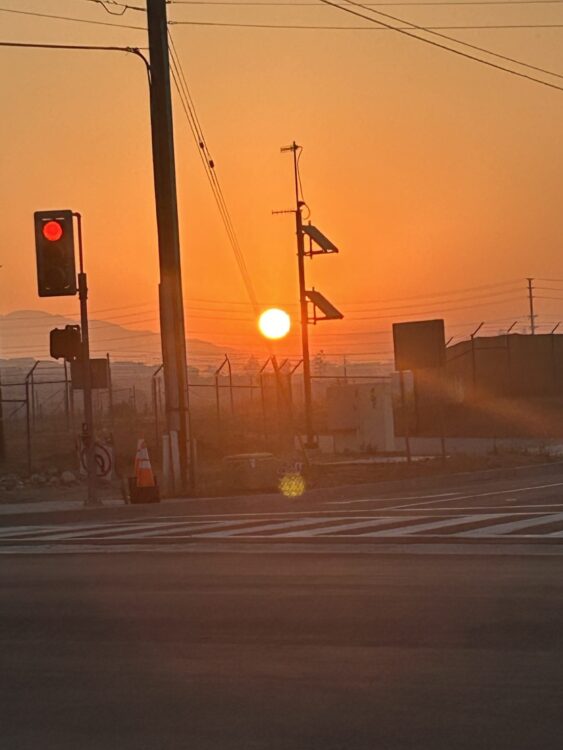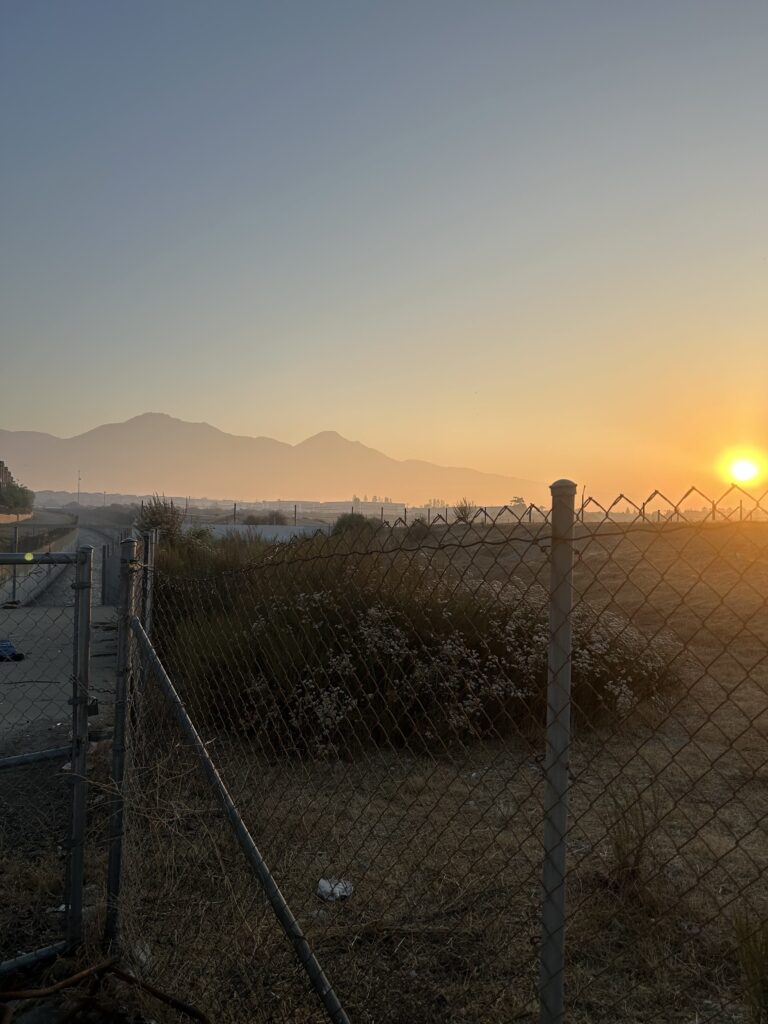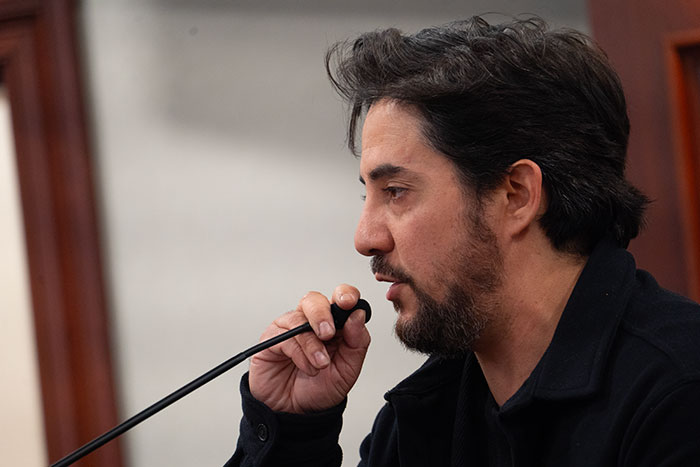Viewpoint: Let’s clear the air: fireworks endanger our health

The corner of Sixth Street and St. and Claremont Boulevard at dawn on July 5. Photo/by Char Miller
by Char Miller | Special to the Courier
This is not a screed against that favorite aspect of our Fourth of July celebrations, the boom-sizzle-pop of countless fireworks and the elongated “oohs” and “ahhs” that accompany a gorgeous, multi-hued pyrotechnic display. Who doesn’t like those technicolor pinwheels?
What concerns me, however, is the toxic aftermath of the countless legal and illegal skyrockets, Roman candles, and firecrackers — what one friend described, after the window-rattling, sleep-disturbed night this Fourth, as World War III.
The airborne consequences were omnipresent in the predawn hours of July 5, when I headed out for my morning ramble. The first clue of many were the streetlights, enshrouded in a gloom that had nothing to do with a cool, moisture-laden marine layer. Air Quality Index: 188 — “Worse than yesterday at about this time.” I’ll say.
Glancing up Mountain Avenue and then Indian Hill Boulevard, their long slopes north were obscured thanks to a cordite fog that had settled low to the ground. At College Avenue, a solitary cyclist huffed uphill; three blocks on, his profile blurred. AQI: 189.

Arrow Route just east of Monte Vista Avenue, at the overpass of the San Antonio Creek Channel, at dawn on July 5. Photo/by Char Miller
By the time I reached the corner of Sixth Street and Claremont Boulevard, arriving just in time to watch the sun rise above a distant ridge, the sky was blood orange. The first rays cut through and magnified the gray film that drifted over the quarry and wreathed the foothills and mountains, a dystopic terrain.
Fireworks were not solely responsible for the lung compromising air quality. After all, the glorious fan shaped artistry of numerous local public displays had flared up into a blisteringly hot sky, the result of a heat dome pressing down over the state.
Adding to the danger of exercising outdoors was the run of elevated temperatures into the low 100s across the Inland Empire. This persistent heat has, and will continue to wither vegetation in valleys, foothills, and mountains of Southern and Northern California. These landscapes are so much kindling, one spark away from a fiery eruption.
That is already happening. This past week two major fires scorched more than 20,000 acres of oak-grasslands in the rumpled hills of eastern Fresno County. Smaller blazes have been popping up in Southern California, near Mt. Baldy, and in Corona and Moreno Valley. The 400-acre Sierra Fire threatened homes in Fontana before firefighters contained it.
Yet the intensity of and the speed with which the Sierra Fire moved led San Bernardino County Fire public affairs officer Eric Sherwin to predict a tough summer ahead. “Southern California is ready to burn. These fires are everywhere,” he said. That reality caused him to urge caution. “Everything we can do to prevent a fire from starting is one less fire that has the potential to threaten homeowners.”
Surely one form of prevention would be to rethink how we celebrate the Fourth of July. That is what Los Angeles and other cities across the wildfire anxious West have done. The city has transitioned away from the explosive “boom-boom-bang” public display to a drone show. Technicians program hundreds of small drones to offer a shape shifting performance that they synchronize to music and words. This year at Gloria Molina Grand Park, thousands of Angelenos watched as 800 drones dazzled. Robert Gonzalez, who helped orchestrate the event, told USA Today that “all your senses are involved — the sky, the sounds, the ambiance, making it all more enjoyable.”
More enjoyable still — this innovative technology will help us clear the air.
Char Miller is a professor of environmental analysis and history at Pomona College, and author of the forthcoming book “Burn Scars: A Documentary History of Fire Suppression, from Colonial Origins to the Resurgence of Cultural Burning.”










0 Comments